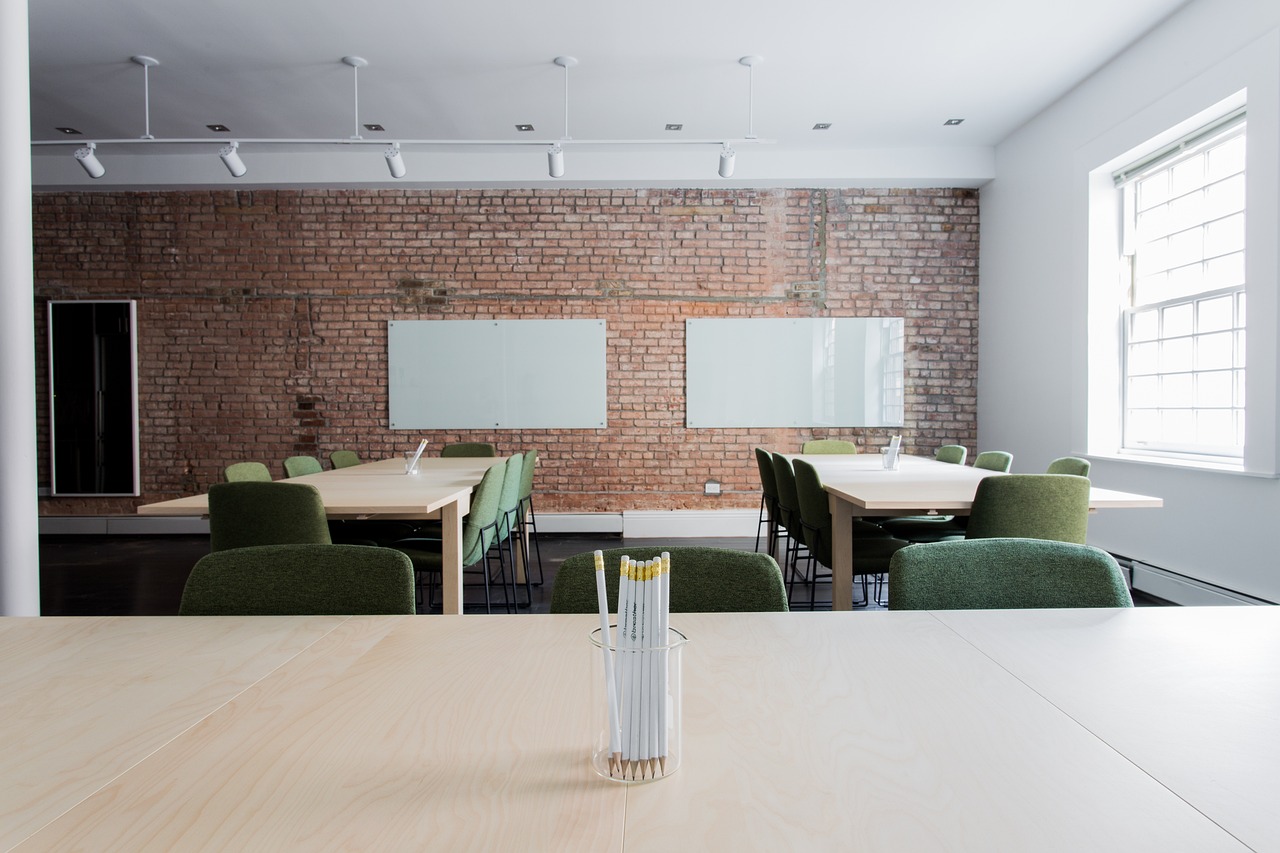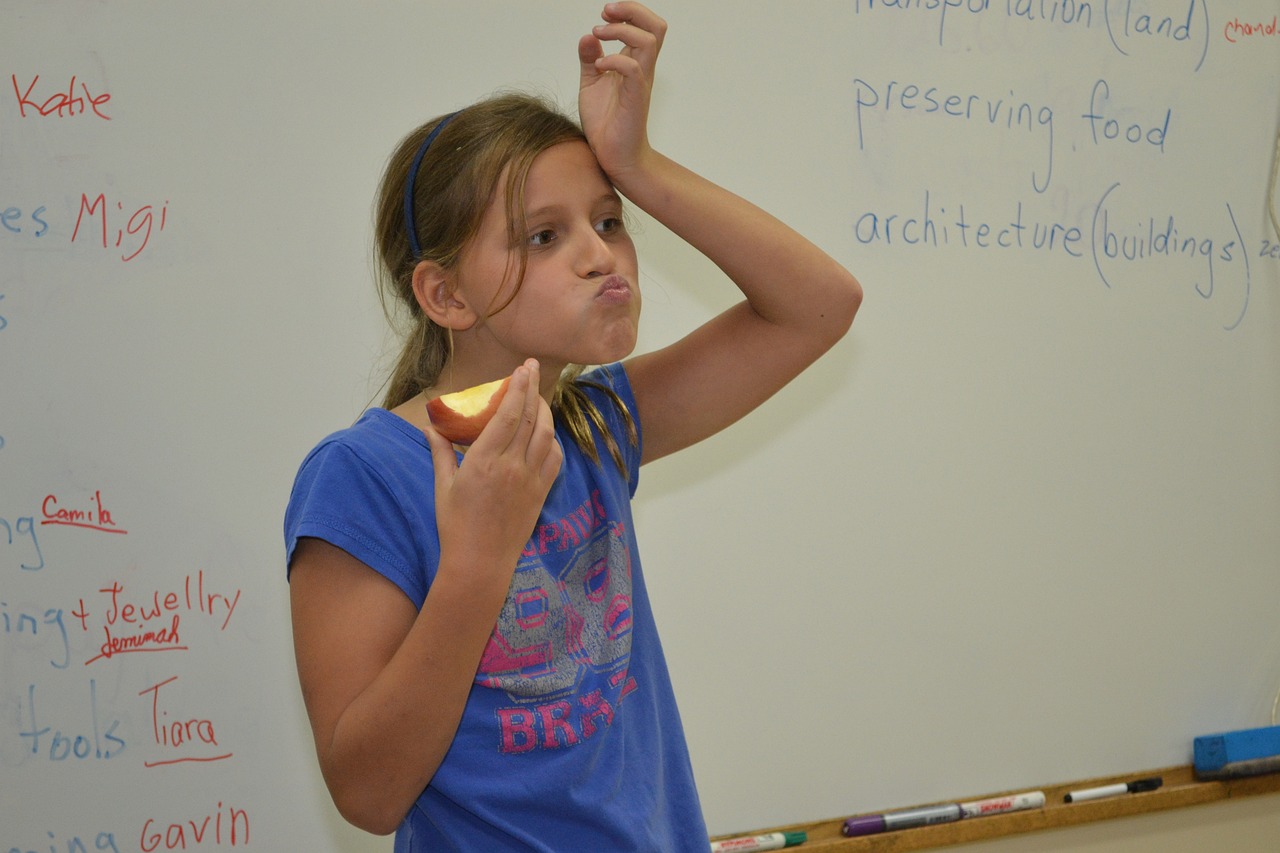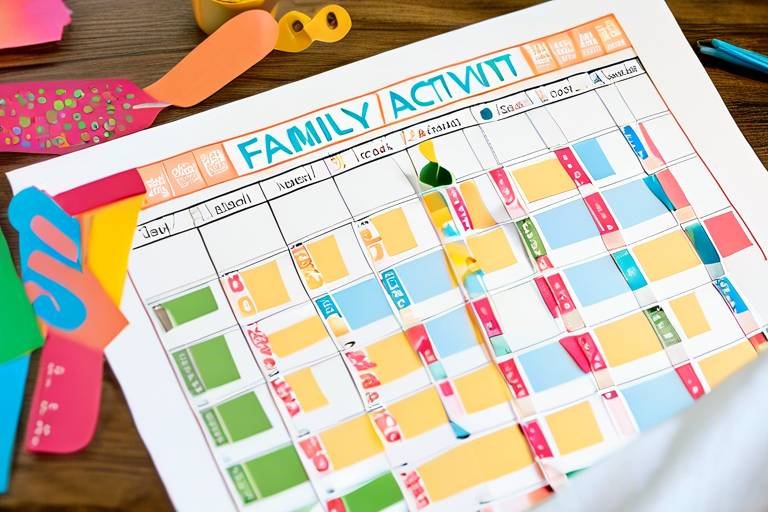Tips for Creating a Productive Learning Environment
Enhancing the learning environment is crucial for academic success. Here are nine tips to help educators and students create a productive setting for effective learning.
Arranging desks and resources strategically can foster collaboration, engagement, and focus among students, maximizing the learning experience.
Integrating technology effectively can enhance learning outcomes. Properly selected and implemented tools can support interactive learning and engagement in the classroom.
Promoting student involvement through discussions, group activities, and hands-on projects can boost retention and understanding of the material.
Offering timely and constructive feedback helps students understand their progress, identify areas for improvement, and stay motivated to learn.
Fostering a supportive and inclusive environment where students feel safe to express themselves can enhance their confidence and willingness to engage in learning.
Establishing clear goals, guidelines, and expectations helps students stay focused, organized, and motivated to achieve academic success.
Teaching students how to prioritize tasks, manage deadlines, and allocate time efficiently can improve their productivity and academic performance.
Fostering teamwork and collaboration among students can enhance their communication skills, critical thinking abilities, and overall learning experience.
Highlighting the significance of mental and physical well-being can help students manage stress, stay motivated, and maintain a healthy balance between academics and personal life.

Optimize Classroom Layout
When it comes to creating a productive learning environment, optimizing the classroom layout plays a crucial role. Imagine a classroom as a canvas, and the arrangement of desks, chairs, and learning resources as the brushstrokes that shape the overall picture of the educational experience. By strategically organizing the physical space, educators can foster collaboration, engagement, and focus among students, ultimately maximizing the learning potential within the room.
Consider the impact of a well-designed classroom layout on student interaction. Placing desks in a circular or group formation encourages teamwork and communication, while also allowing for easy supervision and participation. By creating designated areas for different activities, such as group workstations or individual study corners, educators can cater to diverse learning styles and preferences, ensuring that each student has a space where they can thrive.
Furthermore, optimizing the classroom layout involves more than just the physical arrangement of furniture. It also includes the strategic placement of learning resources, such as whiteboards, projectors, and interactive displays. By ensuring that these tools are easily accessible and visible to all students, educators can facilitate seamless transitions between different learning activities, keeping the momentum of the lesson flowing smoothly.
Additionally, incorporating elements of nature, such as plants or natural light, into the classroom design can create a more inviting and stimulating environment for learning. Studies have shown that exposure to natural elements can enhance concentration, reduce stress, and improve overall well-being, contributing to a more positive and productive learning atmosphere.
In essence, optimizing the classroom layout is about creating a space that not only supports academic learning but also nurtures creativity, collaboration, and engagement. By thoughtfully designing the physical environment, educators can set the stage for meaningful interactions, active participation, and successful learning outcomes.

Utilize Technology Wisely
When it comes to creating a productive learning environment, utilizing technology wisely can significantly enhance the educational experience for both educators and students. Technology, when integrated effectively, has the power to transform traditional teaching methods and engage students in a more interactive and dynamic way. By carefully selecting and implementing appropriate technological tools, educators can cater to different learning styles and enhance the overall learning outcomes in the classroom.
One way to utilize technology wisely is to incorporate interactive learning platforms that allow for real-time feedback and assessment. These tools not only provide instant insights into student understanding but also create a more engaging and personalized learning experience. By leveraging technology in this manner, educators can adapt their teaching strategies to meet the individual needs of students, ultimately fostering a more inclusive and effective learning environment.
Furthermore, technology can be used to facilitate collaborative learning experiences among students. Virtual collaboration tools, online discussion forums, and shared digital workspaces enable students to work together on projects, share ideas, and engage in meaningful discussions regardless of physical proximity. By promoting collaboration through technology, educators can enhance students' communication skills, critical thinking abilities, and overall learning experience.
It is essential to remember that while technology can be a valuable asset in the classroom, it should be integrated thoughtfully and purposefully. Educators must ensure that the technology they incorporate aligns with their learning objectives and enhances the curriculum rather than detracting from it. By utilizing technology wisely, educators can create an innovative and dynamic learning environment that inspires curiosity, creativity, and academic success.

Encourage Active Participation
Enhancing the learning environment is crucial for academic success. Here are nine tips to help educators and students create a productive setting for effective learning.
Active participation is key to keeping students engaged and motivated in the learning process. By encouraging students to actively take part in discussions, group activities, and hands-on projects, educators can create a dynamic learning environment that fosters deeper understanding and retention of the material.
When students actively participate, they are not just passive recipients of information but are actively involved in the learning process. This engagement can lead to increased interest in the subject matter and a higher level of comprehension.
One effective way to encourage active participation is through interactive activities that require students to apply their knowledge in real-world scenarios. This hands-on approach can make learning more meaningful and relevant, leading to a deeper understanding of the concepts being taught.
Additionally, fostering a classroom culture where students feel comfortable sharing their thoughts and ideas without fear of judgment can further encourage active participation. When students feel valued and respected, they are more likely to actively engage in discussions and activities.
By promoting active participation, educators can create a vibrant learning environment where students are motivated to learn, collaborate with their peers, and develop critical thinking skills that are essential for academic success.

Provide Constructive Feedback
When it comes to fostering a productive learning environment, providing constructive feedback plays a vital role in shaping students' academic growth. Feedback is not just about pointing out errors; it is about guiding students towards improvement and success. By offering constructive feedback, educators can help students understand their strengths and areas for development, ultimately enhancing their learning experience.
Constructive feedback should be specific, actionable, and focused on the task at hand. It is essential to highlight what the student did well and provide suggestions for improvement in a supportive manner. By focusing on the process rather than the individual, feedback can motivate students to strive for continuous improvement and excellence.
One effective way to provide constructive feedback is through one-on-one discussions with students. By engaging in open and honest conversations, educators can gain insights into students' learning progress, challenges, and goals. This personalized approach allows for tailored feedback that addresses individual needs and fosters a sense of accountability and ownership in students.
Additionally, incorporating peer feedback can be a valuable learning tool. Encouraging students to provide feedback to their peers not only enhances their critical thinking and communication skills but also promotes a collaborative learning environment. Peer feedback can offer diverse perspectives and insights that enrich the learning process and encourage students to reflect on their own work critically.
Furthermore, utilizing rubrics and assessment criteria can provide clear benchmarks for students to understand expectations and evaluate their own performance. By aligning feedback with established criteria, students can track their progress, set goals for improvement, and take ownership of their learning journey. Consistent and timely feedback allows students to make adjustments, learn from mistakes, and continuously grow academically.

Cultivate a Positive Atmosphere
Fostering a positive atmosphere in the learning environment is essential for promoting student engagement, collaboration, and overall well-being. When students feel safe, supported, and valued, they are more likely to participate actively in class discussions, share their ideas, and take risks in their learning journey. Just like a garden needs nurturing to thrive, cultivating a positive atmosphere requires intentional effort and care from both educators and students.
Imagine a classroom as a greenhouse where positivity is the sunlight that nourishes growth and learning. By encouraging respect, empathy, and open communication, educators can create a welcoming space where students feel encouraged to explore, question, and learn from each other. This positive energy can ripple through the classroom, creating a ripple effect that enhances the overall learning experience for everyone involved.
Building a positive atmosphere also involves celebrating diversity and individual differences. Just like a bouquet of flowers is more beautiful with a variety of colors and shapes, a classroom benefits from the unique perspectives and backgrounds that each student brings. Embracing diversity fosters a sense of belonging and acceptance, creating a harmonious environment where every voice is heard and respected.
Moreover, fostering positivity can extend beyond the physical classroom walls into virtual learning spaces. In today's digital age, creating a positive online atmosphere is equally important for student engagement and connection. By promoting digital etiquette, encouraging online collaboration, and providing a platform for sharing achievements and challenges, educators can cultivate a sense of community that transcends physical boundaries.
Ultimately, cultivating a positive atmosphere is not just about creating a pleasant environment; it is about nurturing a culture of respect, kindness, and support that empowers students to thrive academically and emotionally. When positivity becomes the norm, students are more likely to feel motivated, inspired, and confident in their ability to learn and grow. By sowing the seeds of positivity in the learning environment, educators can harvest a bountiful crop of engaged, resilient, and successful learners.

Set Clear Expectations
Setting clear expectations is like creating a roadmap for success in the academic journey. When educators clearly outline the goals, guidelines, and requirements for their students, it helps in keeping everyone on track towards achieving academic excellence. Imagine trying to reach a destination without a map or directions – it would be chaotic and confusing. Similarly, without clear expectations, students may feel lost and unsure about what is expected of them.
By setting clear expectations, educators provide students with a sense of direction and purpose. It allows students to understand the standards they need to meet, the tasks they need to complete, and the behaviors expected of them. This clarity not only helps students in staying organized but also motivates them to strive towards meeting and exceeding those expectations.
Moreover, clear expectations create a sense of accountability among students. When students know what is expected of them, they are more likely to take ownership of their learning journey. It empowers them to set goals, track their progress, and make necessary adjustments to stay on course. This sense of responsibility fosters a culture of self-discipline and commitment to academic success.
Additionally, setting clear expectations promotes transparency and fairness in the learning environment. When guidelines and requirements are explicitly communicated, all students have an equal opportunity to understand and meet the expectations. This eliminates ambiguity and reduces misunderstandings, creating a level playing field for everyone.
Furthermore, clear expectations help in building mutual trust and respect between educators and students. When educators communicate their expectations effectively, students feel valued and respected. It shows that educators believe in their students' abilities and are committed to supporting them in their academic endeavors. This positive relationship based on clear communication lays the foundation for a productive and harmonious learning environment.

Promote Effective Time Management
Effective time management is a crucial skill that can significantly impact a student's academic performance and overall success. By promoting effective time management strategies, educators can empower students to make the most of their learning experience and achieve their goals efficiently.
One way to promote effective time management is by teaching students how to prioritize tasks based on importance and deadlines. By helping them understand the significance of managing their time wisely, educators can instill a sense of responsibility and discipline in students, enabling them to stay organized and focused on their academic responsibilities.
Additionally, setting realistic goals and creating a structured schedule can aid students in managing their time effectively. By breaking down tasks into manageable chunks and allocating specific time slots for each activity, students can avoid procrastination and ensure that they make steady progress towards their objectives.
Encouraging students to use tools such as calendars, planners, and digital apps can also enhance their time management skills. These resources can help students track deadlines, schedule study sessions, and prioritize tasks, allowing them to stay on top of their academic workload and avoid last-minute rushes.
Moreover, fostering a culture of accountability and self-discipline can further promote effective time management among students. By emphasizing the importance of meeting deadlines, staying organized, and being proactive in their approach to learning, educators can help students develop valuable time management habits that will benefit them beyond the classroom.
In conclusion, promoting effective time management is essential for students to succeed academically and in life. By equipping students with the necessary skills and strategies to manage their time efficiently, educators can empower them to take control of their learning journey and achieve their full potential.

Encourage Collaboration
Collaboration is a key element in creating a dynamic and engaging learning environment. By encouraging students to work together towards a common goal, educators can foster a sense of community, enhance communication skills, and promote critical thinking abilities. Collaboration not only allows students to learn from each other but also helps them develop important social and interpersonal skills that are essential for success in the real world.
When students collaborate, they are exposed to different perspectives, ideas, and approaches, which can broaden their understanding of the subject matter. By working together, students can brainstorm creative solutions, challenge each other's thinking, and learn how to effectively communicate and negotiate with their peers. Collaboration also teaches students the value of teamwork and cooperation, preparing them for future endeavors where collaboration is often necessary for success.
Moreover, collaborative learning can create a supportive and inclusive atmosphere where students feel empowered to share their thoughts and ideas without fear of judgment. By working in teams, students can build trust, respect, and empathy towards their peers, leading to a more positive and enriching learning experience. Collaboration also promotes a sense of responsibility and accountability, as students learn to rely on each other to achieve common goals.
Implementing collaborative activities in the classroom can take various forms, such as group projects, peer-to-peer discussions, and team-based assignments. These activities not only encourage active participation but also enhance problem-solving skills, creativity, and adaptability. By fostering a collaborative learning environment, educators can prepare students for the challenges and opportunities they will encounter in their academic and professional lives.

Emphasize the Importance of Self-Care
Self-care is not just a buzzword; it is a fundamental aspect of overall well-being that plays a crucial role in academic success. Just like a plant needs water and sunlight to thrive, students also require proper care and attention to flourish in their educational journey. Emphasizing the importance of self-care is essential in helping students manage stress, maintain a healthy work-life balance, and sustain their motivation and focus.
When students prioritize self-care, they are better equipped to handle the challenges that come their way. Encouraging them to engage in activities that promote mental and physical well-being, such as exercise, mindfulness, adequate sleep, and healthy eating, can significantly impact their academic performance. Just as a car needs regular maintenance to function optimally, students need self-care practices to recharge and rejuvenate their minds and bodies.
Moreover, fostering a culture that values self-care sends a powerful message to students that their well-being matters. By normalizing self-care practices and integrating them into the learning environment, educators can create a supportive atmosphere where students feel empowered to prioritize their health and happiness. Just as a supportive net catches a falling acrobat, a nurturing environment can catch and uplift students during challenging times.
Ultimately, emphasizing the importance of self-care is not just about taking breaks or indulging in leisure activities; it is about instilling lifelong habits that promote holistic wellness. By teaching students to listen to their bodies, manage their emotions, and seek help when needed, educators can equip them with invaluable skills that extend far beyond the classroom. Just as a sturdy foundation supports a towering skyscraper, self-care forms the basis for students to reach their full potential and thrive in all aspects of their lives.
Frequently Asked Questions
- What is the importance of optimizing classroom layout?
Optimizing the classroom layout is crucial as it can enhance collaboration, engagement, and focus among students. By strategically arranging desks and resources, educators can create a conducive environment for effective learning.
- How can technology be utilized wisely in the classroom?
Technology should be integrated effectively to enhance learning outcomes. Properly selected and implemented tools can support interactive learning, engagement, and overall student participation in the classroom.
- Why is active participation encouraged in the learning process?
Active participation, through discussions, group activities, and hands-on projects, is encouraged as it can significantly boost retention and understanding of the material among students. It promotes a deeper level of learning and engagement.
- What role does constructive feedback play in student learning?
Constructive feedback plays a vital role in student learning by helping them understand their progress, identify areas for improvement, and stay motivated. Timely feedback can guide students towards academic success.
- How does cultivating a positive atmosphere benefit students?
Fostering a positive and inclusive atmosphere in the classroom can enhance students' confidence, willingness to engage, and overall learning experience. It creates a safe space for expression and collaboration.



















